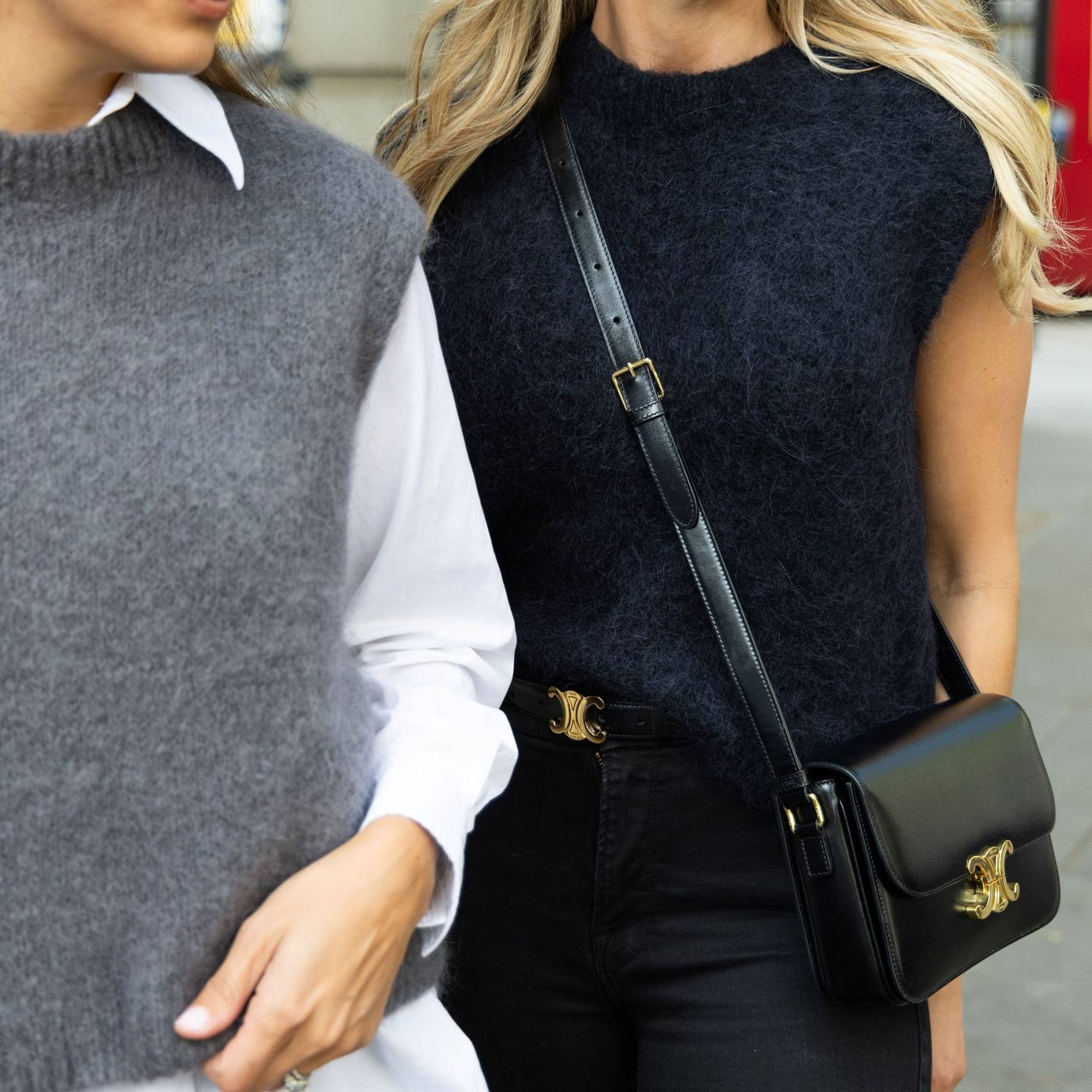Alpaca
Alpaca fleece is a silky natural fibre and is considered one of the most luxurious in the world. It is the warmest type of wool and has a beautiful softness, lustre and versatility. It has incredibly lightweight yet strong fibres. While similar to sheep’s wool, it is warmer, not prickly, and bears no lanolin, which makes it hypoallergenic. Alpacas graze in herds on the level heights of Peru, Bolivia and Chile. They are typically sheared in the spring, this does not cause them any harm and is a necessity for their wellbeing.
We recommend soaking the garment for 3-5 minutes in cold water with a small amount of mild liquid detergent or even shampoo gently squeezing the suds through the garment. Remove any excess water carefully and avoid twisting, wringing or scrubbing as this will cause felting. Then dry the garment, away from sunlight, in a flat position on a dry towel. Carefully remove any wrinkles by hand and straighten seams and facings. Do not tumble dry. After the product has dried, you can lightly steam with an iron, or simply hang it up in the bathroom, run the shower and let the steam ease away any creases.
Blends
We often blend certain quantities of manmade fibres such as polyester, elastane and viscose to mix through our more luxury yarns. There are several reasons we do this; ultimately it makes the garments more practical and easier to wash and wear which is ideal for daywear. It can reduce the cost of the garment for you. It can help oversized knits to keep their shape and bounce back after washing. It can give a nice bit of stretch through jeans and tees. It can also help to minimise pilling in knitwear.
Manmade fibres are very easy to care for, but we would recommend the use of a GUPPYFRIEND when washing all man-made fibres to capture microplastics and prevent these from getting into the water supply. To soften up your garment and reduce static you can use fabric conditioner in the wash, but be sure to choose an eco-friendly one. Garments can be dried on a low heat in a tumble dryer and do not require ironing, but if necessary use a warm iron.
Cashmere
Cashmere is the ultimate in luxury but also makes a durable and practical investment. Cashmere travels well and doesn’t wrinkle. We use only Grade A Mongolian cashmere, so you can be confident that not only will any cashmere products you buy from us be super-soft, but they will be warm and, if cared for properly, long-lasting.
We advise de-pilling with a cashmere comb and then turning the garment inside out before washing it. We recommend washing on a cold wool setting with a slow spin, hand washing is great but often the garment becomes so heavy when wet it can stretch out the fibres. We wash ours in the machine. A delicate, non biological detergent is ideal, and you only need to use a small amount, too much can lead to felting. Smooth the garment back into its original shape and place flat on a towel – dry naturally away from direct heat such as radiators or sunlight. Do not tumble dry.
Caring for your garment this way will dramatically reduce the number of loose fibres that cause pilling and you should find that the garment will then consolidate, soften and improve with every wear. You may find you need to use the de-pilling comb for the first few wears then you should only need to do so again every once in a while.
It is best to keep your knitwear folded and store them throughout the summer with cedar sticks or lavender bags.
Coated Fabrics
Any coated fabrics can be washed in a machine at 30 degrees. Give them a cool iron on the reverse if needed but take care applying heat. Do not dry clean.
Cotton
Cotton is a natural and durable fabric that is very easy to care for. It can be machine washed on a normal cycle with regular detergent and can be dried in a tumble drier on a low setting. Cotton can crease easily but can be ironed on a medium heat.
We are increasing the amount of Organic Cotton that we have on offer. Organic cotton is grown with a smaller environmental impact than conventional cotton. This is in part due to the reduction in synthetic chemicals and irrigated water used in its farming. As the fibre is grown without harmful chemicals, it’s also kinder to your skin.
Denim
It is best not to wash denim too often. When you do, wash it inside out with similar colours, as denim dye can tend to bleed with the first few washes. Use a detergent without bleach in a cold wash on any cycle. You can then tumble dry on a low heat until your jeans are dry but do not overheat.
Faux Fur
We recommend dry cleaning your faux fur.
You can of course wash it at your own risk. Use a mild washing detergent and put on a cool, low spin cycle in the washing machine. Using a GUPPYFRIEND will protect the garment and also prevent microplastic pollution. After washing lie the garment out on a dry towel and squeeze out any excess water then shake it out to fluff up the fibres. Once the garment has dried you can use a wide toothed comb or brush to separate the fibres.
Lambswool
Wool is a breathable fabric which can help regulate temperature, keeping you warm in the winter and cool in the spring. It has antibacterial properties which help to naturally keep you fresh throughout the day. It also has a natural elasticity which stretches with wear then returns to shape, so there is less chance of garments sagging.
We advise de-pilling with a cashmere comb and then turning the garment inside out before washing it. We recommend washing on a cold wool setting with a slow spin, hand washing is great but often the garment becomes so heavy when wet it can stretch out the fibres. We wash ours in the machine. A delicate, non biological detergent is ideal, and you only need to use a small amount, too much can lead to felting. Smooth garment back into original shape and place flat on a towel – dry naturally away from direct heat such as radiators or sunlight. Do not tumble dry.
Leather
Our leather is extremely soft, buttery and supple and of a very high quality. Leather is durable, long lasting and offers a timeless style statement.
Clean at a leather specialist only. Avoid getting leather products wet, and leave them plenty of time to dry before storing. Keep them stored in the shade and try not to put them in sealed plastic bags.
Linen
Linen is a natural fibre made from flax. It’s durable, comfortable and perfect for a warm summer’s day. It can last for decades when looked after properly, and is easy to care for. It can be machine or hand washed, it also becomes softer and more absorbent after each wash. Linen is famous for creasing easily, but you can either embrace these natural creases, or use an iron while the garment is damp to help smooth these out. Then hang or lie flat to finish drying.
Metals
To keep your jewellery looking lovely we’d advise that you do not wear in the shower, do not spray perfume on it and avoid sleeping in it. You can clean it with a lint free cloth and some jewellery polish.
Printed Fabrics
We recommend turning the item inside out when washing and drying. You can also iron the garment inside out on a gentle heat.
Viscose/Rayon
If using a machine wash, viscose can shrink up to 5%. To prevent this, we strongly suggest ironing inside out whilst damp on a low heat setting to maintain the original shape.
Viscose/Rayon is a processed fabric created from natural fibres such as wood pulp, bamboo and plant fibres, which means it is breathable and highly absorbent (more than cotton). It has many similar qualities to silk; it drapes beautifully and feels lovely against the skin.
The benefit of Viscose/Rayon is how well it wears and washes making it perfect for day wear. It can crease easily so it’s best to hang when storing.
Washing on a cold delicate cycle in your machine is fine, however hand washing is preferable as this fabric will shrink up to 5% after washing. Wash in cool water with a hand-washing detergent. Gently squeeze and massage the detergent into the fabric and then rinse thoroughly in cool water. Do not wring, twist or bunch up Viscose/Rayon. Do not tumble dry as this will cause shrinkage, the best way to maintain the original shape of your garment is to dry on a rack rather than on a towel, and always iron inside out whilst damp on a low heat setting to maintain the original shape.
Satin
Luxurious, smooth and silky, satin takes strong coloured dyes very well and drapes nicely.
Satin should be either hand washed or washed on a delicate cycle in your washing machine. It is always best to use cold water and a delicate detergent. When hand washing do not wring or twist the fabric, just gently massage the detergent into the fabric and rinse well with water. Do not tumble dry on a high heat; it is best to air dry in the shade. If it is necessary to iron always use a low to medium heat setting with the garment turned inside out. If garments become static and clingy you can find an anti static spray from haberdashers or try running it through a metal coat hanger.
Sequins
It’s always best to dry clean your sequinned items. Do not put the garment in the tumble dryer and never iron, as the sequins can melt. You can remove wrinkles from the sequinned clothes by hanging them in a steamy bathroom for 30 minutes before you head to the party!
Silk
Silk is made from the fibres of the cocoon of the Chinese silkworm, as with other natural fibres it allows your skin to breathe and feels beautiful on.
Silk can tend to be dry clean only. However you can, depending on the particular garment, and at your own risk, hand wash it. Use very cold water and a mild detergent, make sure not to soak the garment for too long and then rinse in cold water until all the soap is rinsed out. Lay out the garment on a dry towel to remove any excess water, do not twist or wring the garment as this will damage the fabric. Cool iron if necessary. If garments become static and clingy you can find an anti static spray from haberdashers or try running it through a metal coat hanger.
If you have any allergies to particular fabrics and would like some advice on choosing suitable garments for you please get in touch with our Customer Services team.




